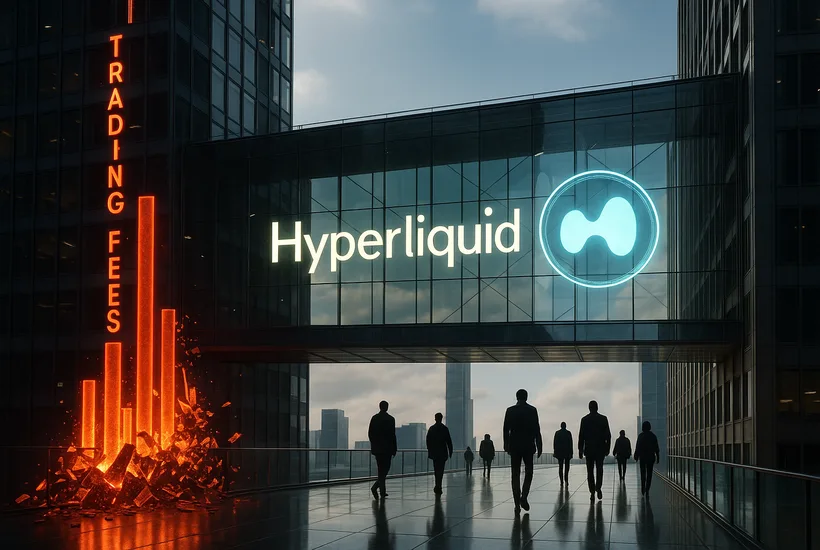- Hyperliquid will launch USDH, its native stablecoin, and reduce spot trading fees by 80% to enhance liquidity.
- USDH will integrate into Hyperliquid’s broader ecosystem, including perpetual contracts, spot markets, and DeFi protocols.
- $HYPE token surged 4.5% in August and is seeing increasing institutional interest, including from Arthur Hayes and 21Shares.
Hyperliquid, a decentralized perpetual futures exchange, is gearing up to launch its first native stablecoin while simultaneously cutting spot trading fees by 80%. This dual move is designed to boost liquidity and expand its dominance in the DeFi derivatives market. The exchange made the announcement through Discord, revealing that the next network upgrade would reduce taker fees, maker rebates, and user volume contributions for spot pairs by 80%.
In tandem with the fee cuts, Hyperliquid has reserved the USDH ticker for a new dollar-backed stablecoin, which will be issued through a validator vote. Teams wishing to issue USDH must submit proposals, and the winning bid will be selected by the validator quorum in a fully on-chain process. This process ensures that the platform’s decentralized governance model remains intact while supporting stablecoin issuance.
USDH aims to anchor Hyperliquid’s expanding DeFi suite
The newly proposed stablecoin, USDH, is positioned as a “Hyperliquid-first” compliant stablecoin, with deep integration across the platform’s ecosystem. This includes use in perpetual contracts, spot markets, staking, and within protocols like Kinetiq, Hypurrfi, and Hyperlend. By incorporating USDH, Hyperliquid seeks to expand its total value locked (TVL) across its decentralized finance (DeFi) applications.
The stablecoin will serve as a settlement layer, helping the platform generate internal revenue through minting and burning fees, as well as collateralized lending flows. Hyperliquid aims to create a self-reinforcing “stablecoin flywheel”, allowing for a robust and efficient ecosystem. As regulatory bodies like the U.S. Treasury Department continue to consider stablecoin frameworks, Hyperliquid’s decision to put USDH under validator control reflects its strategy to align with regulatory expectations while staying true to its decentralized roots.
Hyperliquid’s growth and the $HYPE token surge
Hyperliquid’s expansion into stablecoins comes after a record-breaking summer, with the platform generating $106 million in revenue from perpetual futures trading in August. This marks a 23% increase from the previous month, further solidifying Hyperliquid’s market leadership in the DeFi derivatives space. Trading volume surged to $383 billion, and the platform now commands 70% of the DeFi perpetual market share, with cumulative trading volume surpassing $2.57 trillion.
Despite operating with a lean team of just 11 employees, Hyperliquid has consistently outpaced competitors like Robinhood and Bitstamp in terms of volume and liquidity. Its custom HyperEVM Layer 1 blockchain, which eliminates gas fees for trades while maintaining fully on-chain order books, is largely responsible for the platform’s centralized-exchange performance with decentralized transparency.
The performance of $HYPE, the governance token powering Hyperliquid’s ecosystem, has mirrored the platform’s success. $HYPE surged 4.5% in August, trading at $45.62, and continues to see significant interest from both retail and institutional investors. Notably, former BitMEX CEO Arthur Hayes has speculated that $HYPE could deliver 126x returns by 2028 as Treasury-backed stablecoins reshape global banking. The growing institutional interest is evident, with Hayes himself acquiring 58,631 $HYPE tokens worth $2.6 million.













